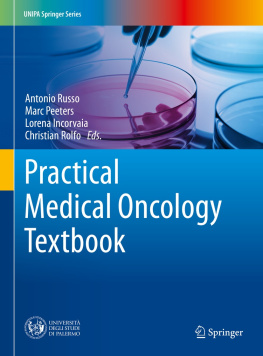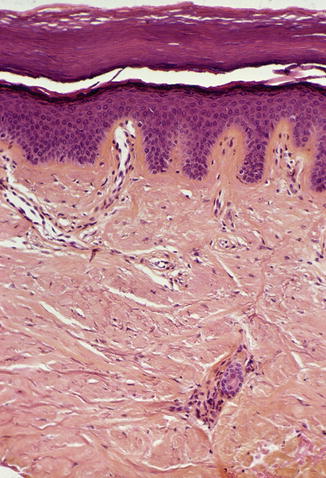Ali Alikhan , Jean-Marie Lachapelle and Howard I. Maibach (eds.) Textbook of Hand Eczema 2014 10.1007/978-3-642-39546-8_1
Springer-Verlag Berlin Heidelberg 2014
1. The Hand: An Anatomoclinical Approach
Abstract
This anatomoclinical approach to the skin of the hand covers many different aspects, considering that it is a mosaic of different juxtaposed skin structures.
Special attention has been focused on the interrelationship between intact skin and many pathological entities that are encountered in the field of hand eczema.
1.1 Introduction
The hand has always fascinated humanity, due to its unique characteristics. On the walls of Cosquer Cave, an underwater cave in Marseilles, France, prehistoric paintings include mysterious stencils of human hands.
Painters and sculptors have devoted their time to accurate reproductions of the hand.
In this respect, there is a wonderful museum in Lausanne (Switzerland) that is entirely dedicated to all sociocultural aspects of the hand [].
The hand is well defined in Wikipedia (the free encyclopedia) []. It represents a very stimulating approach to this chapter. It is defined as a prehensile, multi-fingered extremity located at the end of an arm or forelimb of primates such as humans, chimpanzees, monkeys, and lemurs. Interestingly enough, a few other vertebrates, such as the koala (which has two opposable thumbs on each hand and fingerprints remarkably similar to human fingerprints), are often described as having either hands or paws on their front limbs.
1.2 The Human Hand: A Unique Structure
As far as we are concerned, the human hand is a unique structure, when compared to other parts of the body, and it is closely related to our environment. For example:
The hands are used for both gross motor skills (such as grasping a large object) and fine motor skills (such as picking up a small pebble).
As explained later on, the fingertips contain some of the densest areas of nerve endings on the body and are, therefore, the richest source of tactile feedback.
It is generally accepted that each hand is dominantly controlled by the opposing brain hemisphere, so that handedness (i.e., the preferred hand choice for single-handed activities, such as writing) reflects individual brain functioning.
This chapter is exclusively devoted to skin characteristics of the hand and is focused on some particularities that deserve special attention for an accurate understanding of lesions encountered in hand eczema.
There are hundreds of publications referring to the skeleton, the muscles, the tendons, the joints, the topography of vessels and nerves, and so forth, but they are beyond the scope of the current textbook.
1.3 Some Anatomical Remarks About the Fingers
A few observations about the five digits of the hand will help one to comprehend some characteristics of hand eczema, which is fully explained in the next chapters.
The terminology related to fingers is universally accepted. The thumb is located on one of the sides, parallel to the arm. A reliable way of identifying true hands is from the presence of opposable thumbs. Opposable thumbs are identified by the ability to be brought opposite to the fingers, a muscle action known as opposition.
The four other fingers can be folded over the palm, which allows the grasping of objects. Each finger, starting with the one closest to the thumb, has a colloquial name to distinguish it from the others:
Index finger, pointer finger, or forefinger
Middle finger or long finger
Ring finger
Little finger, pinky finger, or small finger
As far as the length of fingers is concerned, there is a dimorphism between males and females. The ring finger is proportionally longer than the index finger in men, whereas the index finger is proportionally longer than the ring finger in women. This is a very old observation. We have confirmed it in a recent study conducted in a cohort of 100 males and 100 females. The mean length of the ring finger was 7.960.11 cm in men and 7.460.17 cm in women. The mean length of the index finger was 7.640.13 cm in men and 7.930.08 cm in women (unpublished data).
Although correlation studies suggest that digit ratios reflect prenatal exposure to androgens, the developmental mechanism underlying sexually dimorphic digit development remains unknown. Nevertheless, recent studies have identified previously undescribed molecular dimorphisms between male and female limb buds and have provided experimental evidence that the digit ratio is a lifelong signature of prenatal hormonal exposure [].
In another paper from the United Kingdom [].
1.4 The Hand: A Mosaic of Various Juxtaposed Skin Structures
It is obvious that the skin of the hand is a very complex anatomoclinical entity. Other areas of the body share similar skin differences for instance, the feet and the face. But, due to its vulnerability to aggressive agents, the hand deserves special attention. It is an important issue for dermatologists, occupational physicians, general practitioners, and nursing personnel. The term mosaic is most probably appropriate and of great help for a better understanding of various characteristics of hand eczema. When tracking fundamentals of occupational dermatology, it is important to focus on these anatomical aspects for a better understanding of several pathologies.
Most physicians divide the hand into two skin structures: the dorsum (back) of the hand and the palm. The fingers are considered separately. While this view is basically correct, it is an oversimplification of the entity. An extended view is fully explained in the next sections.
1.5 The Dorsum of the Hand
1.5.1 Clinical Aspects
The skin of the dorsum of the hand is generally considered very similar to the skin of the extensor aspect of the forearm.
The skin is thin, soft, and pliable so that it can recoil when the fingers are stretched. In young adults, veins may be apparent or not (Fig. ).
Fig. 1.1
The skin of the dorsum of the hand is thin, soft, and pliable
Some areas may be hairy, mainly the latero-external sides of the hand and the back of the fingers. In occupational dermatology, when mineral oils were extensively used in many factories, these areas were classical sites for the occurrence of comedones and the so-called oil folliculitis, a rare condition nowadays [].
1.5.2 Histological Features
The histological pattern of the dorsum of the hand and the dorsal aspect of the fingers, in formalin (or Bouins solution)-fixed specimens, can be described as follows (Fig. ):













